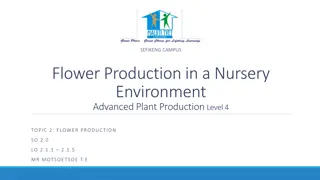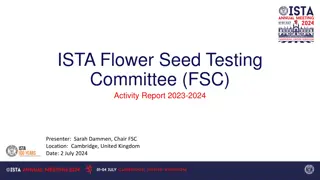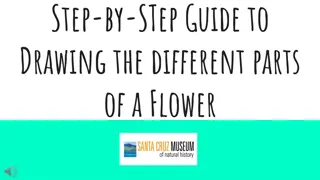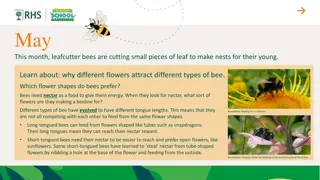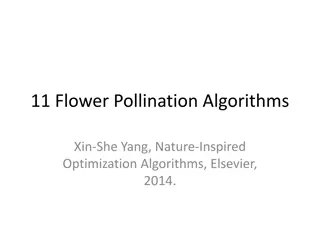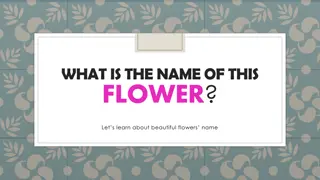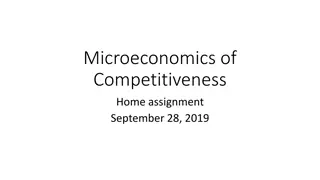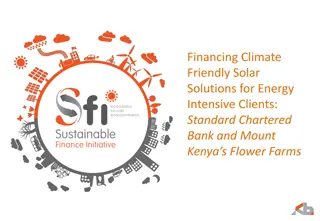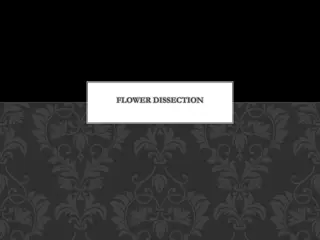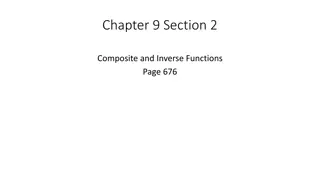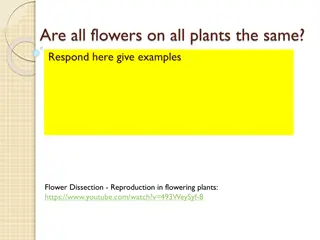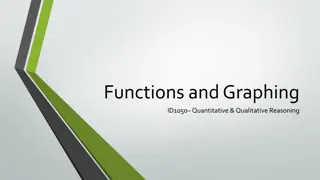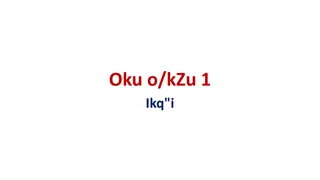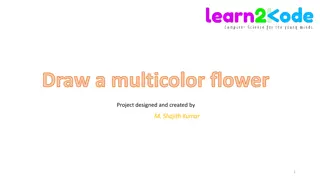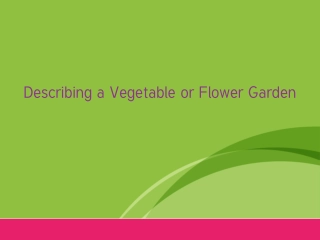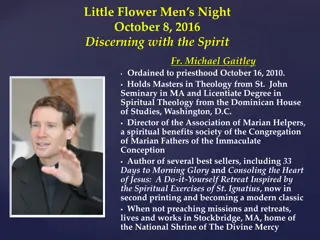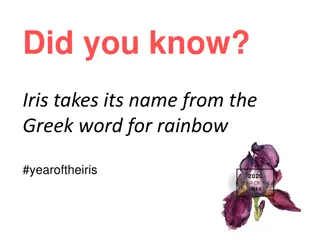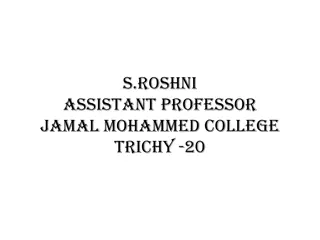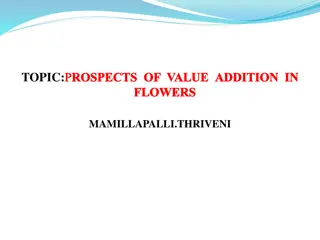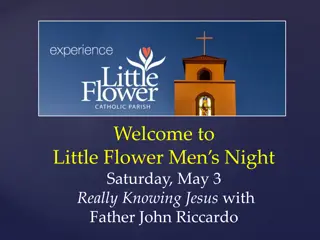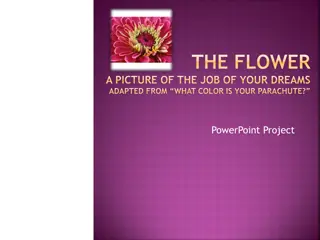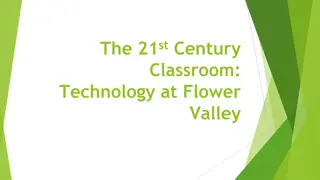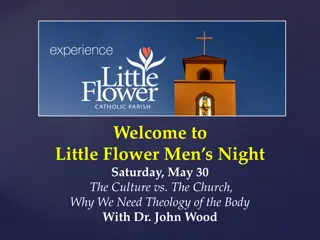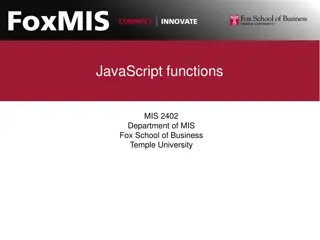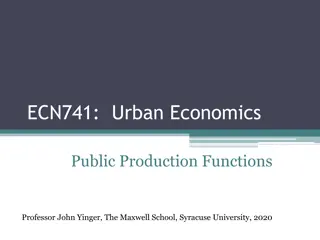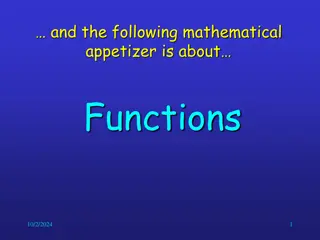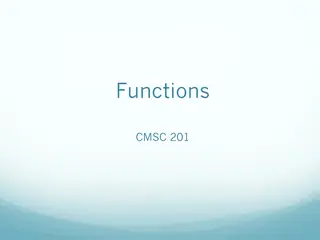Understanding the Parts and Functions of a Flower
Explore the intricate components of a flower, including male and female reproductive parts, through informative images and descriptions. Learn about perfect and imperfect flowers, male (stamen) and female (pistil) parts, as well as other vital flower structures like petals, sepals, and roots. Delve into the pollination process, reproduction steps, and the intriguing relationship between flowering and the length of the night.
Download Presentation

Please find below an Image/Link to download the presentation.
The content on the website is provided AS IS for your information and personal use only. It may not be sold, licensed, or shared on other websites without obtaining consent from the author. Download presentation by click this link. If you encounter any issues during the download, it is possible that the publisher has removed the file from their server.
E N D
Presentation Transcript
Parts and Functions of a Flower
Two Types of Flowers Perfect they have both male and female reproductive parts in one flower. Imperfect have on male or only female reproductive parts in a flower.
Male Parts and Functions Stamen is the male reproductive part of a flower. Anther produces pollen grains which develop sperm. Filament supports the Anther.
Female Parts and Functions Pistil is the female reproductive part of a flower. Stigma sticky pollen-receptive part of the pistil. Style the stalk of the pistil down which the pollen tube grows. Ovary contains the ovules and becomes the fruit. Ovule becomes the seeds when sperm cells fertilize the egg cells.
Other Parts and functions Petal colorful part of a flower used to attract insects and birds. Sepal protects the bud of a young flower. Receptacle reproductive parts of a plant are attached here. Roots provides the stems and leaves with water and dissolved minerals from soil. Roots
Pollination Pollination is the process in which pollen is transferred in the reproduction of plants. Cross-pollination Self-pollination Is when pollen is delivered to a flower from a different plant. Is when pollen from one flower pollinates the same flower of the same plant. Some methods of pollination Animals (birds, reptiles, mammals) Insects (bees and butterflies mostly) Wind WATER
Steps to Flower/Plant Reproduction ***Reproduction of a plant takes place in the flower*** Pollination 1. The Anther produces pollen 2. That pollen is transferred to the stigma of itself or another flower through pollination. Fertilization 3. Pollen travels down the style to the ovary to fertilize the eggs. The eggs grow into a seed or seeds and can now reproduce.
What controls flowering????? The length of Night! 1. During the day plants taken in light, water and nutrients needed to go through photosynthesis. 2. Then at night it uses the glucose (food) to grow and reproduce FLOWER.
Video View Brain Pop on Pollination!!!!!!!!!!!!


